Last week, Matt Hancock, the secretary of state for health, claimed that the government had “thrown a protective ring around care homes” since the start of the coronavirus crisis.
Unfortunately, since that protective ring was thrown, 20,000 people have somehow found a way to die within it, so somewhat unsurprisingly, the quality of that protective ring, and the degree of protection it provides, is a subject on which Hancock was required to provide more detail to the House of Commons.
It has been regularly remarked upon of late that Hancock is tired. But he’s not so much tired as traumatised.
Download the new Independent Premium app
Sharing the full story, not just the headlines
He goes through the motions of these horrifying dispatches in a kind of sullen monotone, like the PTSD-addled cave guide in The League of Gentlemen, who drifts with no tonal differentiation between explanations on the formation of stalactites to how he sees the outline of the dead boy’s face in shadows on the wall.
“We will keep working to strengthen the protective ring we have cast around all our care homes,” Mr Hancock said.
On Monday, Priti Patel was in the House of Commons, her face set in her traditional vacant half-smirk, as the government pressed on with its immigration bill, launching its extravagantly ill-judged social media campaign to celebrate “ending free movement” and the “taking back control” of our borders.
It’s possible then, just possible, that somewhere within government, somebody is aware of the staggeringly obvious fact that protective rings need to work from day one. A protective ring that needs strengthening is not a protective ring.
“We have tested symptomatic residents of care homes,” Hancock said, a claim that no one who actually works in a care home would agree with, but is probably less untrue than most of the other claims going around so it’ll do for now.
But the problem Hancock has got, what we in the news business like to call the “top line” on care homes, is that right at the start of the coronavirus crisis, nominally before the fictional ring was thrown around them, thousands of people were rushed into them from hospitals, to free up bed capacity.
Those people weren’t tested for coronavirus, and now care home workers and owners and managers and everyone in between are lining up to go on the TV and the radio and explain that that is precisely how Covid-19 came into their care homes, where it then spread, well, like the highly contagious virus it is. Anyone who’s actually been inside Hancock’s protective ring appears to be scarred by the unmistakable stench of death.
And this, really, is the problem with the protective ring. It’s that after it was built, coronavirus was subsequently rained down above it from on high, like a sort of Covid-19 napalm. And in an especially cruel twist, it was done by the very people who’d just claimed to have put in place a protective ring that doesn’t actually exist.
When one searches for analogies for Hancock’s protective ring, sadly one finds only the final days of the Sri Lankan civil war, in which terrified Tamils were rushed towards specially created safe havens, only for those safe havens to then be deliberately and callously bombed from the air.
Indeed, it is kind of best to think of Hancock and his protective ring as a very odd, very low-budget Baywatch remake, in which Hancock sprints in very, very, very slow motion towards various care homes and throws his life-saving protective ring towards them. Except that there isn’t actually a protective ring at all, there’s just words.
“I have thrown my protective ring around you!” shouts the protective ringless Hancock, his eyes alive with the hope that the power of his words will convince them to overlook the demonstrable certainty that absolutely no protective ring is there.
In many ways, it’s worse. The trouble with a protective ring that is retroactively created through words alone, and then subsequently claimed to have been strengthened, is that there is now a fairly large degree of ambiguity over which side of the ring is meant to be the beneficiary of its protection.
Back in the first days of coronavirus, visits to care homes were banned ostensibly to keep the vulnerable safe. Now it is by no means clear whether the protective ring is meant to keep coronavirus out or in.

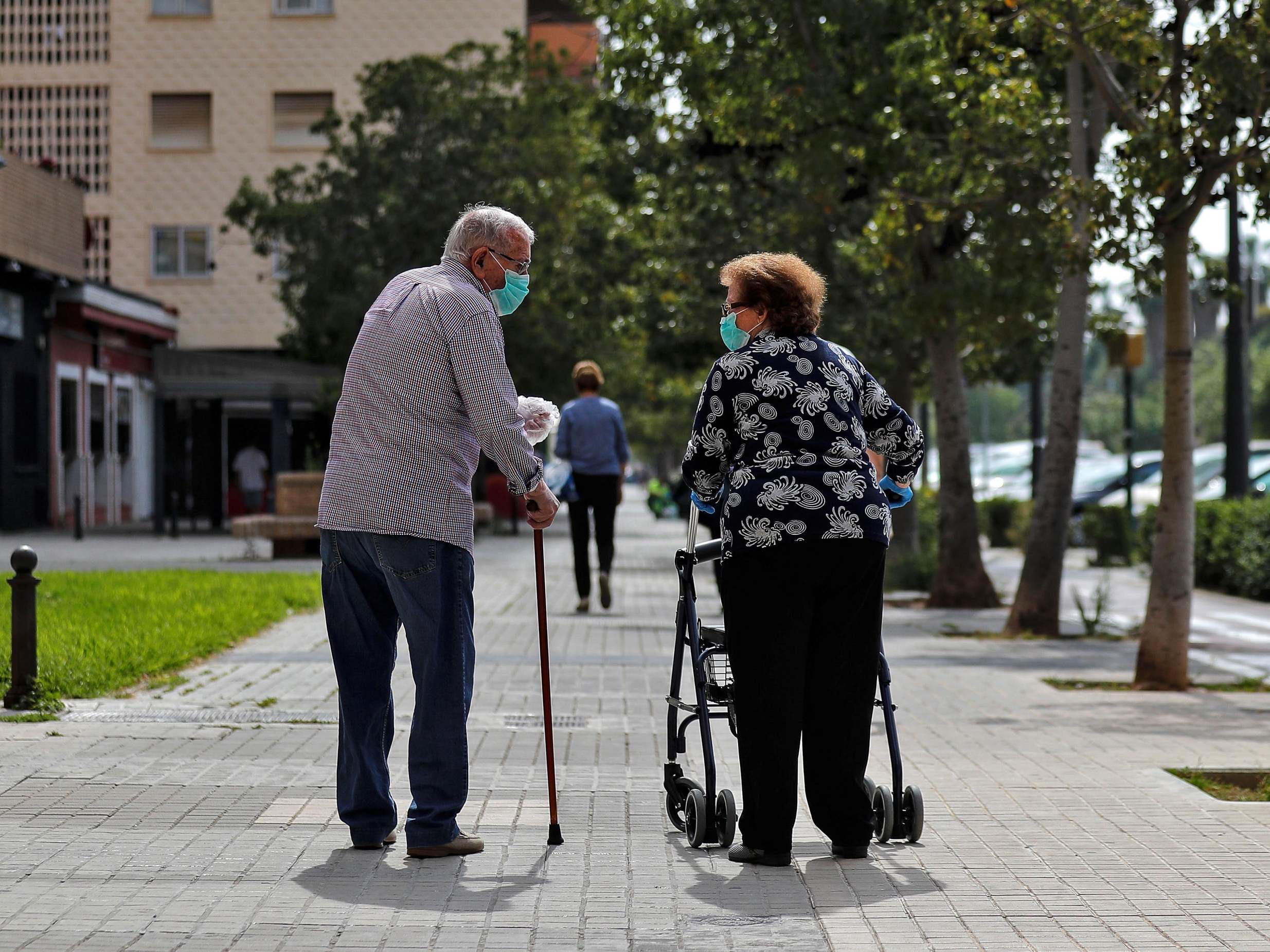
1/19
Two elderly people chat on a street in Valencia, Spain on 4 May
EPA
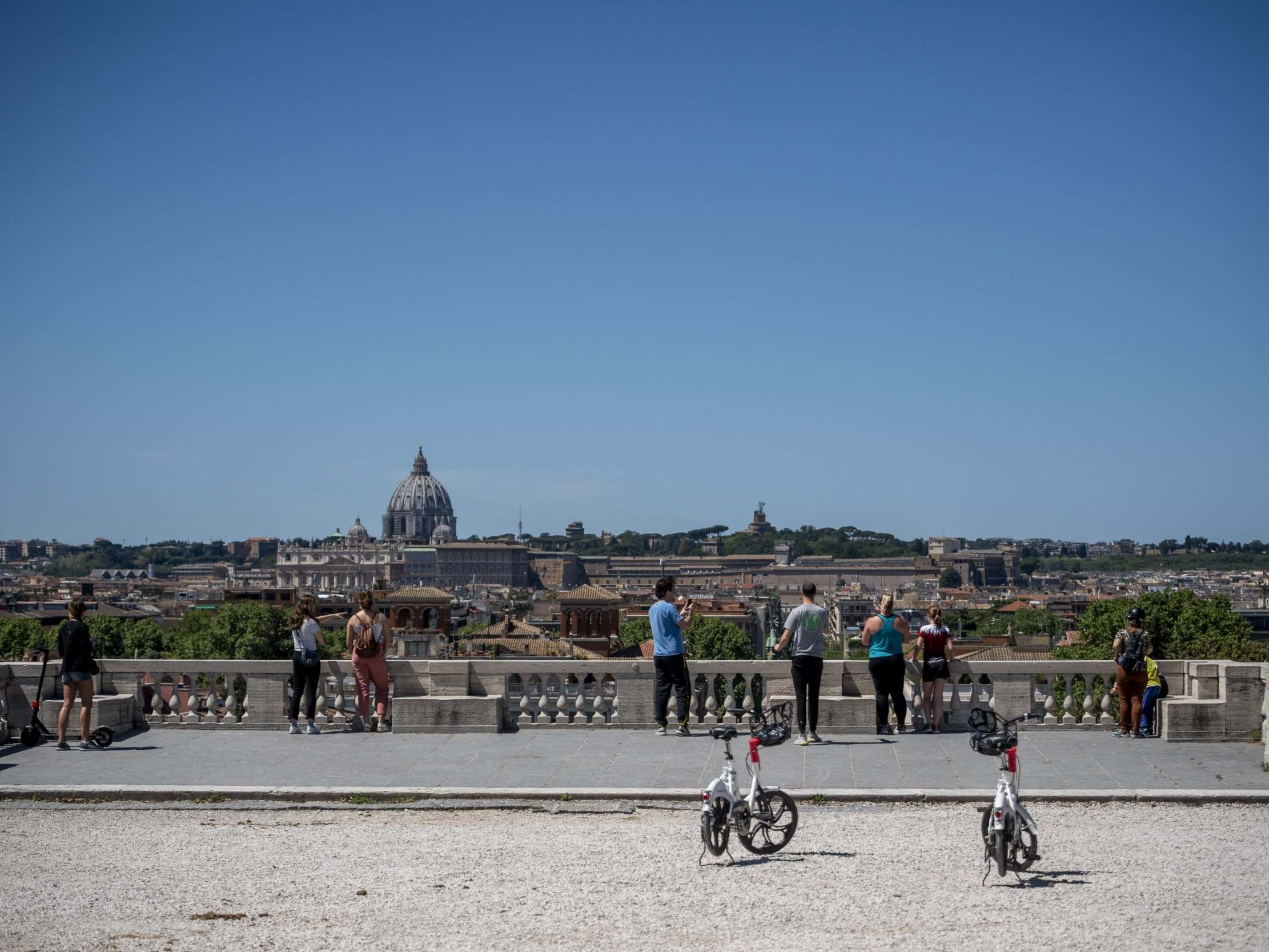
2/19
People look at the city from Villa Borghese park in Rome during the first day of Italy’s next phase in its coronavirus lockdown
Getty Images

3/19
An elderly couple who has not been outside for nearly two months enjoys the weather as they sit on a bench in a park in Athens on 4 May
AFP via Getty Images
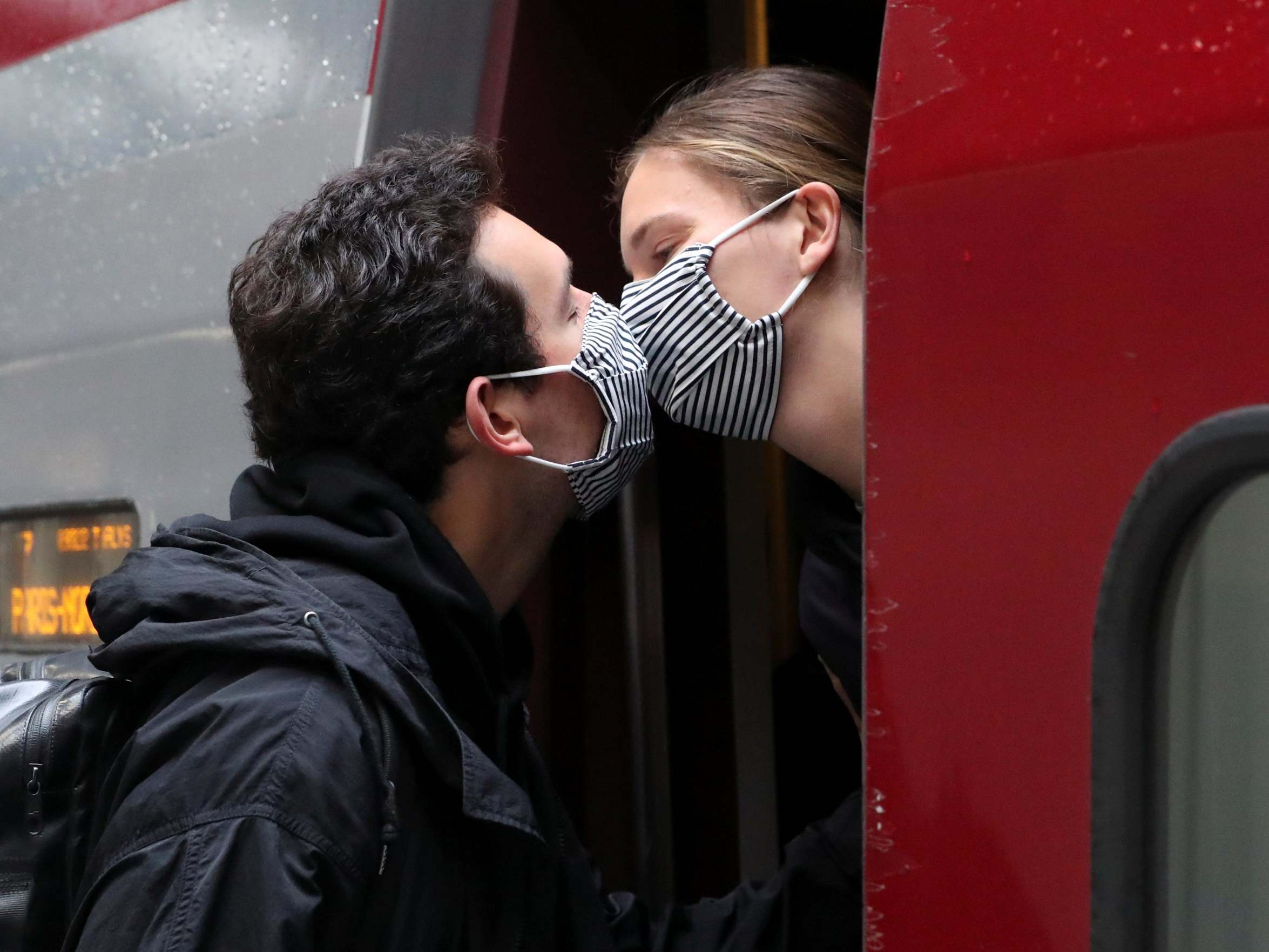
4/19
Henri de Chassey, wearing a protective face mask, kisses his partner Margaux Rebois, who is returning to Paris after spending two months in Brussels on 4 May
REUTERS
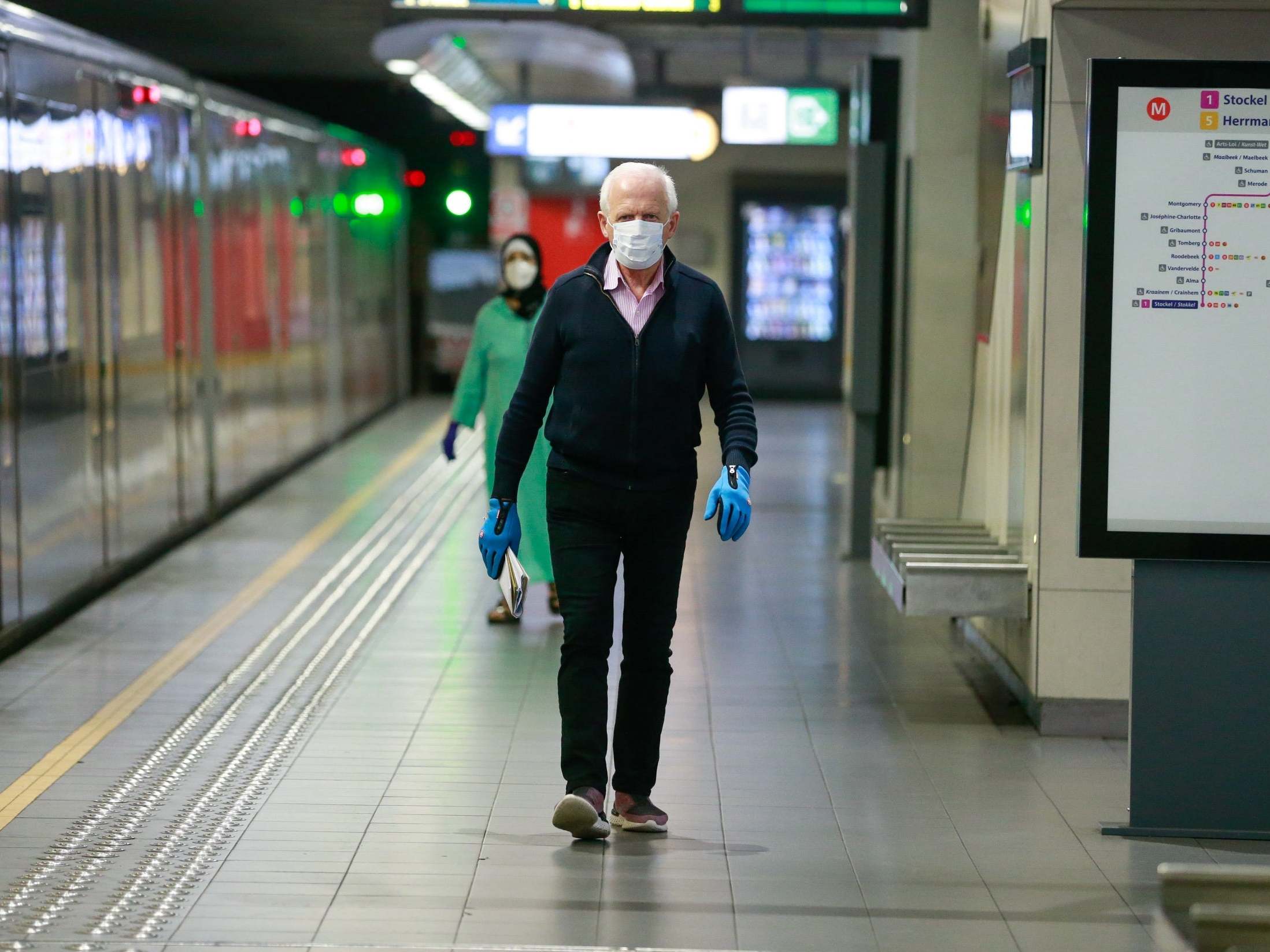
5/19
A commuter in protective mask wears gloves at an underground station in Brussels as some companies are allowed to bring workers back to the office
EPA/STEPHANIE LECOCQ

6/19
Paralympic swimmer Inigo Llopis prepares to swim in San Sebastian, Spain, for the first time since the lockdown began
Getty Images
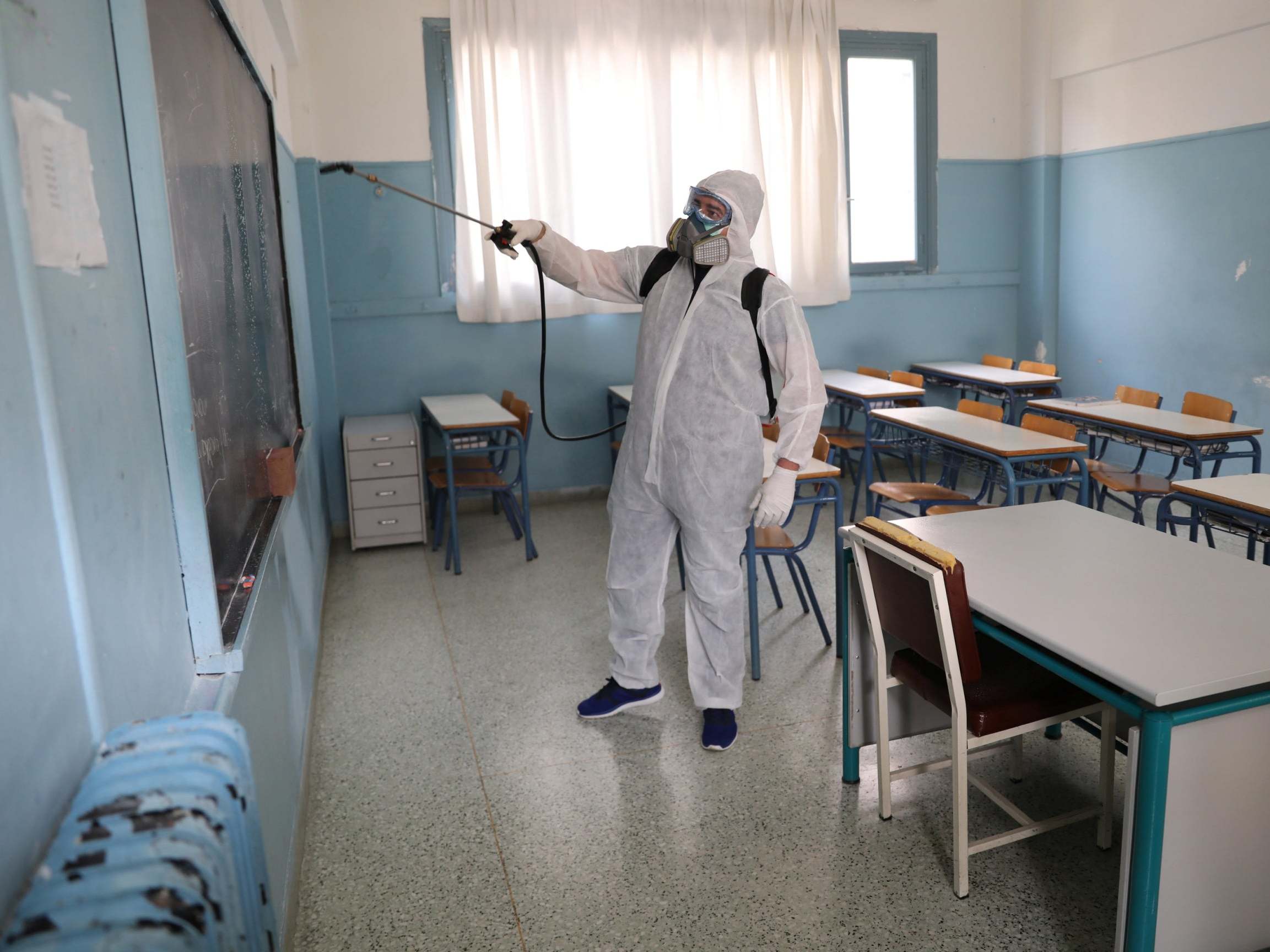
7/19
A worker wearing personal protective equipment disinfects a school in Athens as Greece relaxes its nationwide lockdown
REUTERS
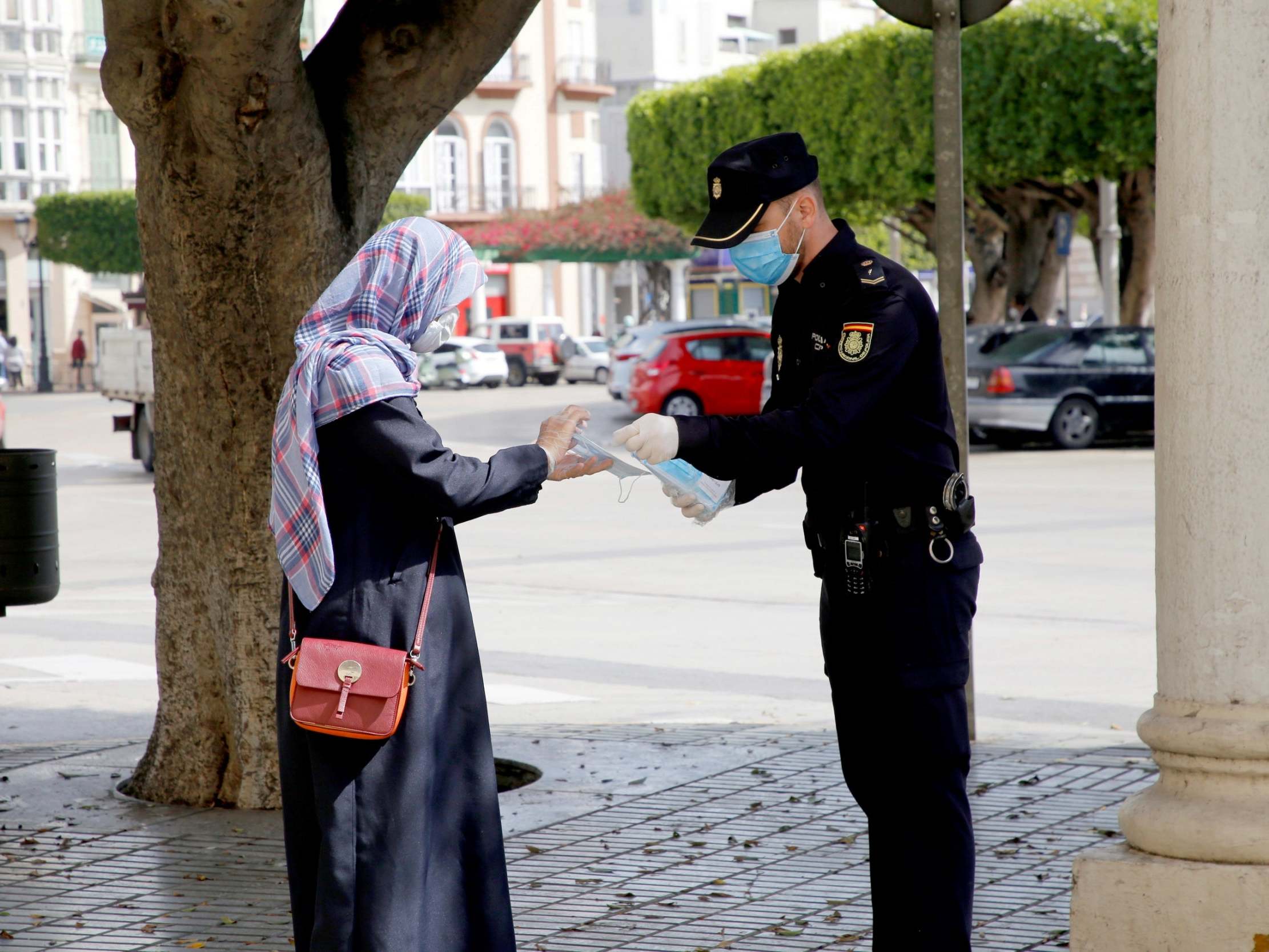
8/19
A Spanish National Police officer distributes protective masks in Melilla, Spain, on 4 May
EPA
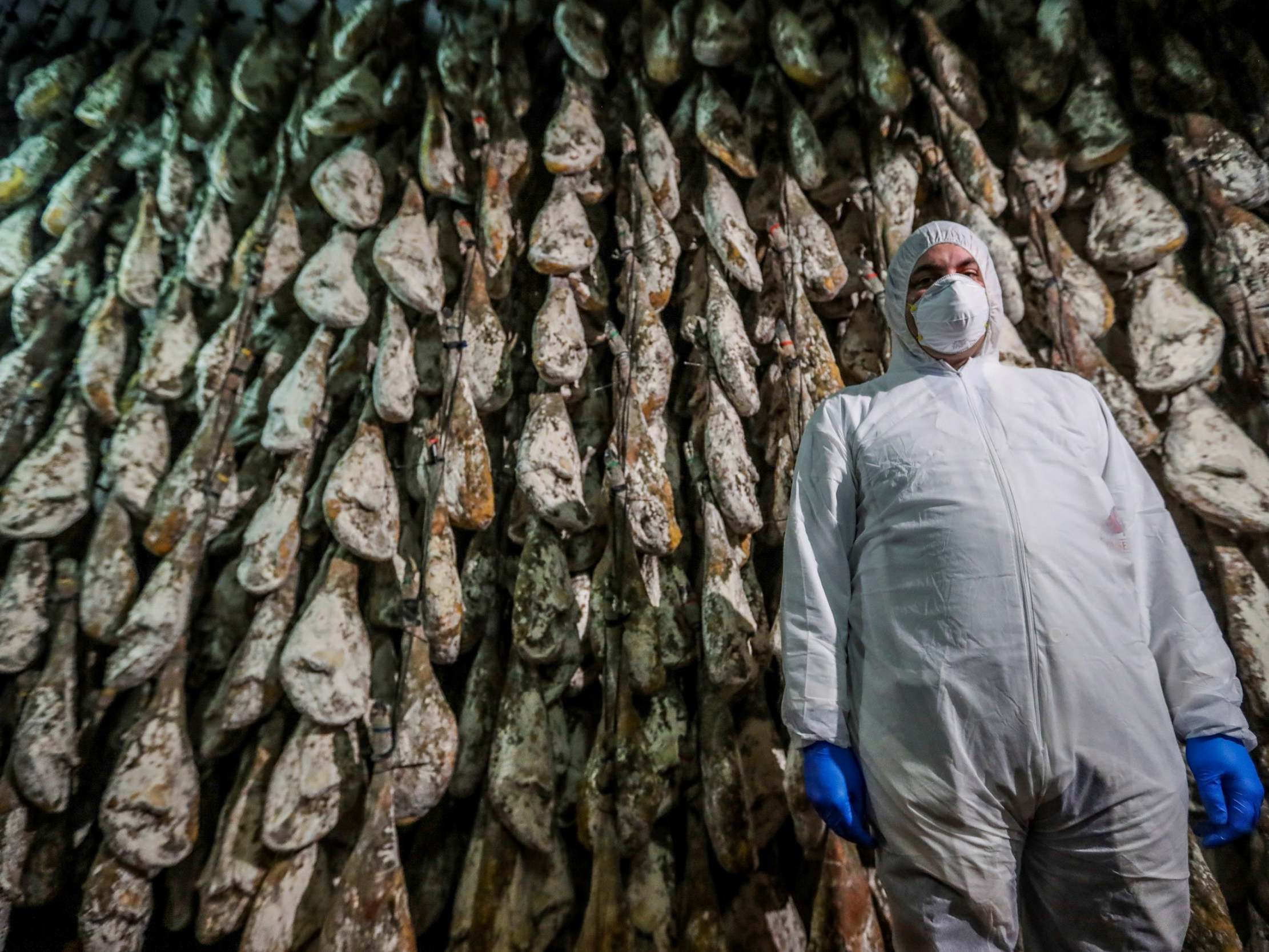
9/19
An employee poses in front of halfway-cured hams in a factory in Guijuelo, Salamanca, Spain, on 4 May
EPA
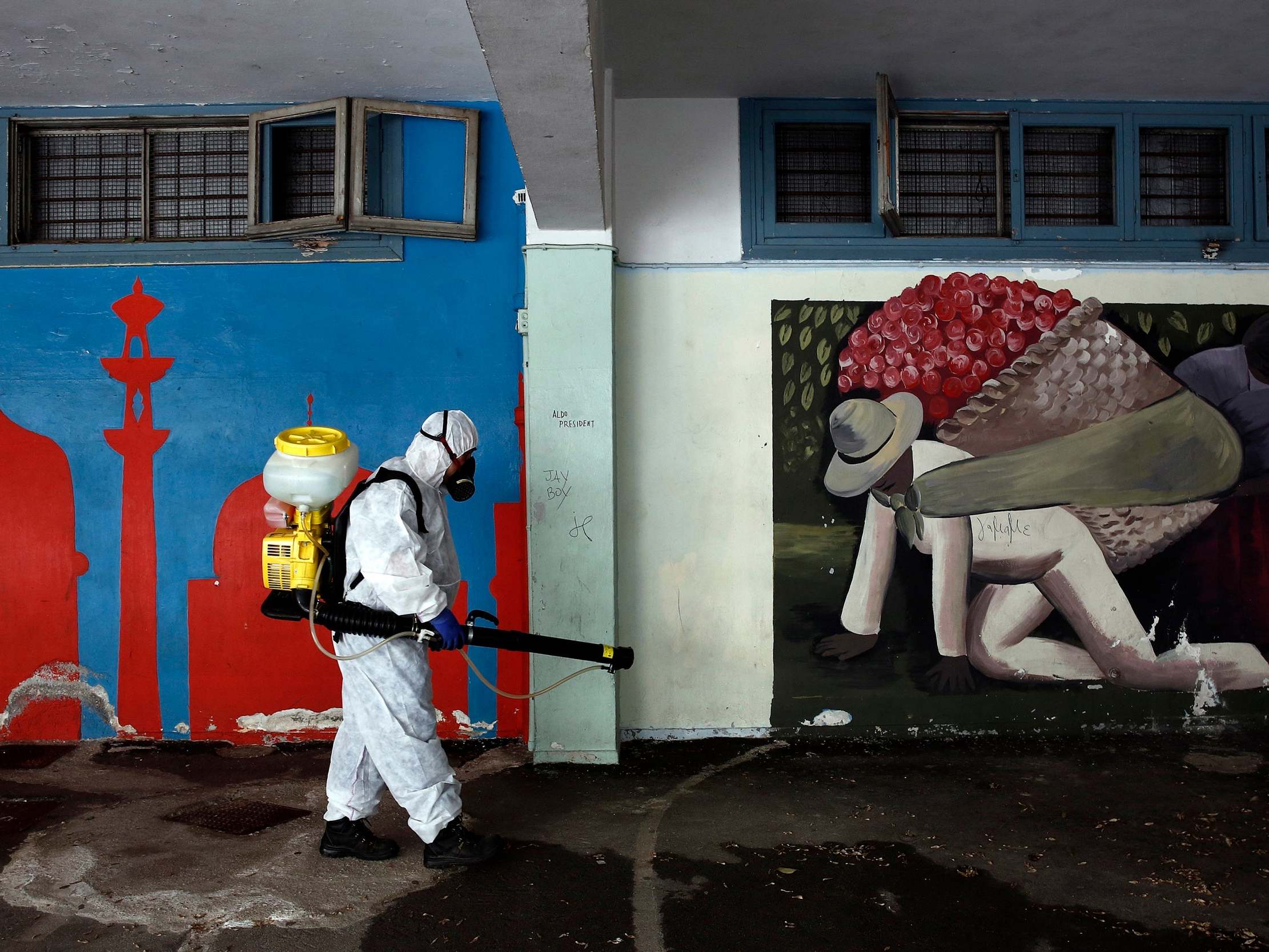
10/19
Workers in protective suits disinfect a high school in Athens as Greece moves to reopen schools for final-year students on 11 May
EPA
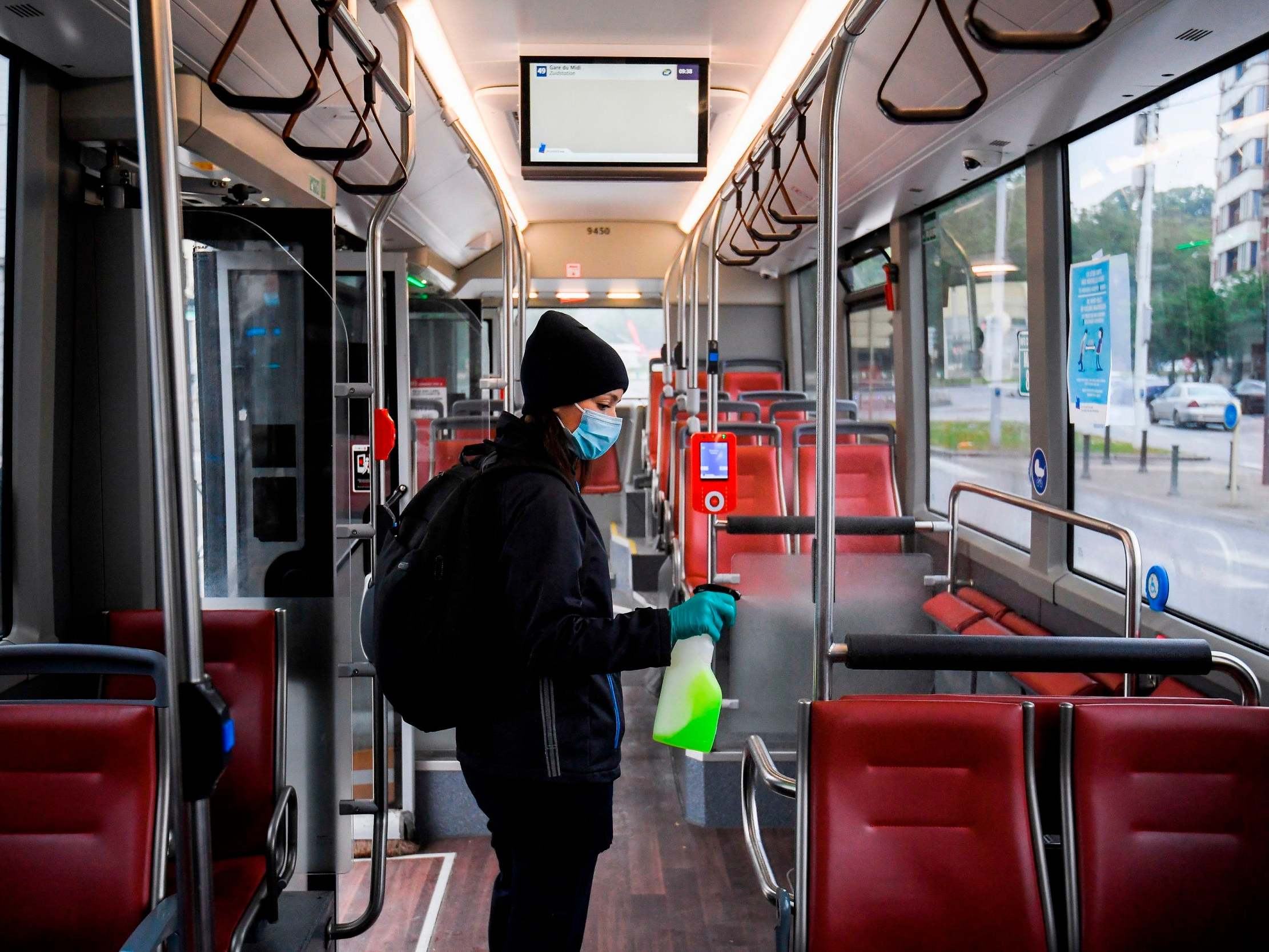
11/19
A worker disinfects a bus as transport vehicles are disinfected several times a day as part of Belgium’s lockdown exit strategy
Belga/AFP via Getty Images
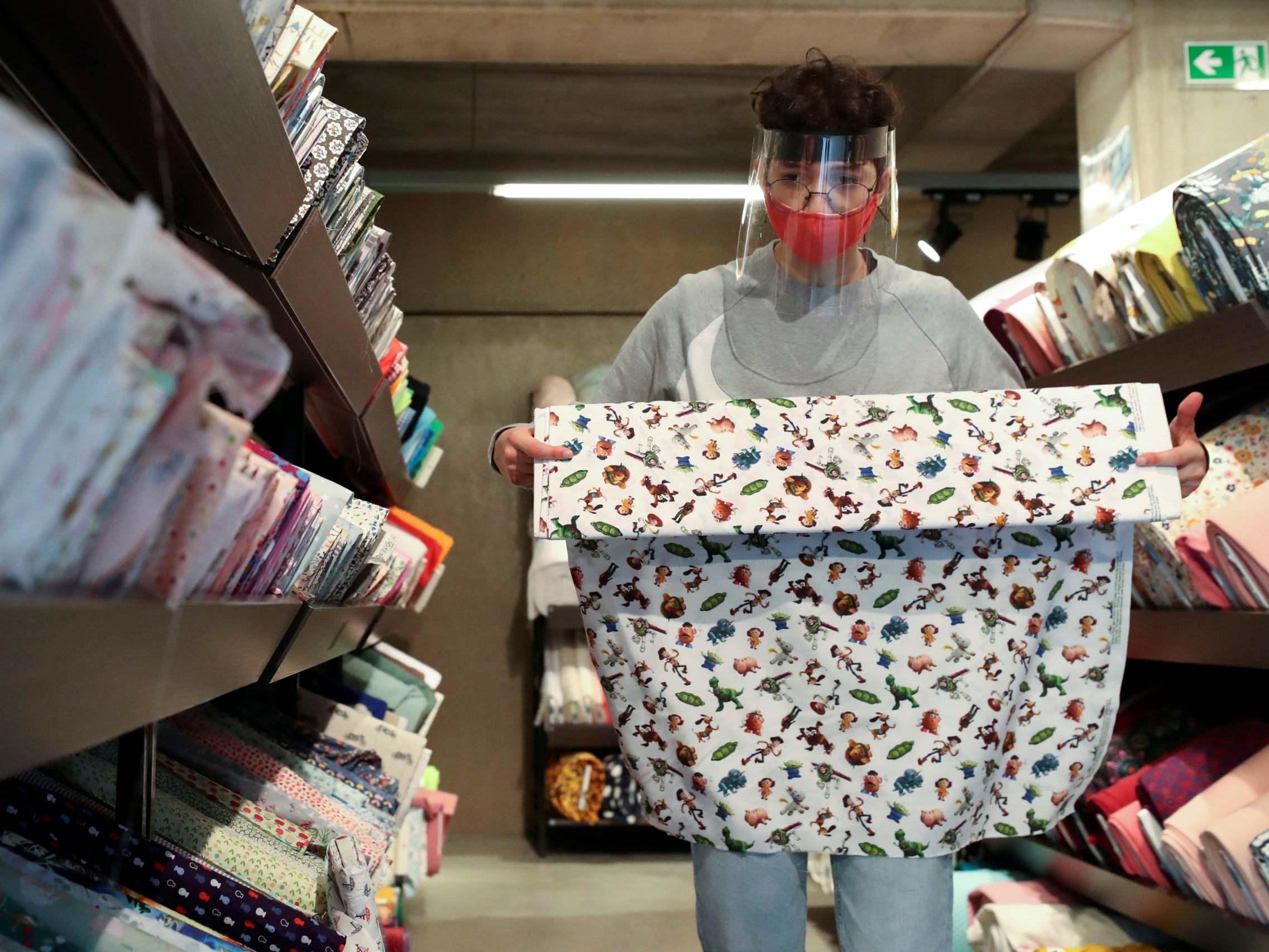
12/19
A worker from Textilia haberdashery in Brussels holds a fabric that can be used to make customised protective face masks as Belgium relaxes its lockdown measures
REUTERS/Yves Herman
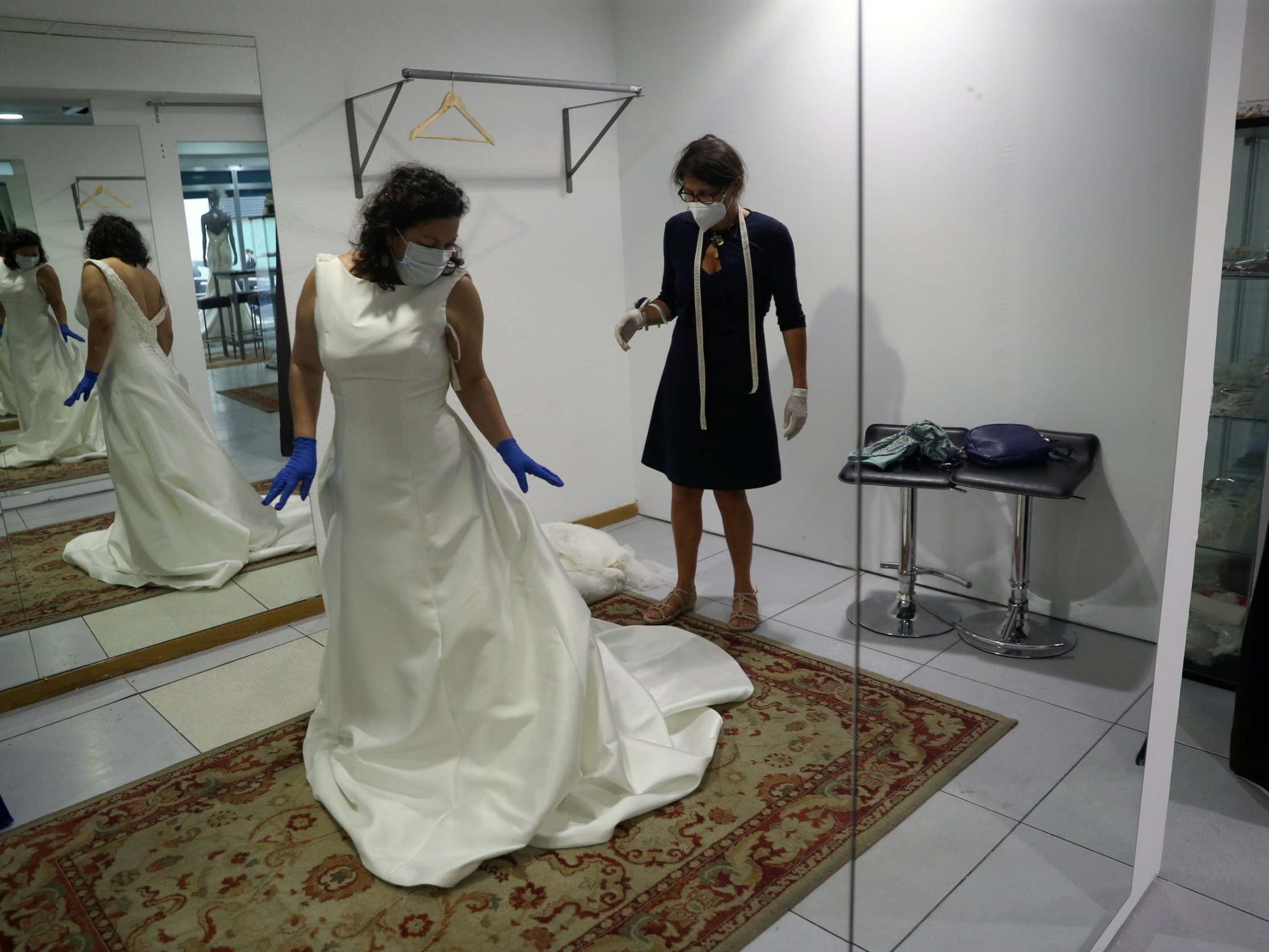
13/19
A bride tries on a wedding dress at a bridal shop in Madrid on the first day that some small businesses are allowed to open during Spain’s lockdown
REUTERS
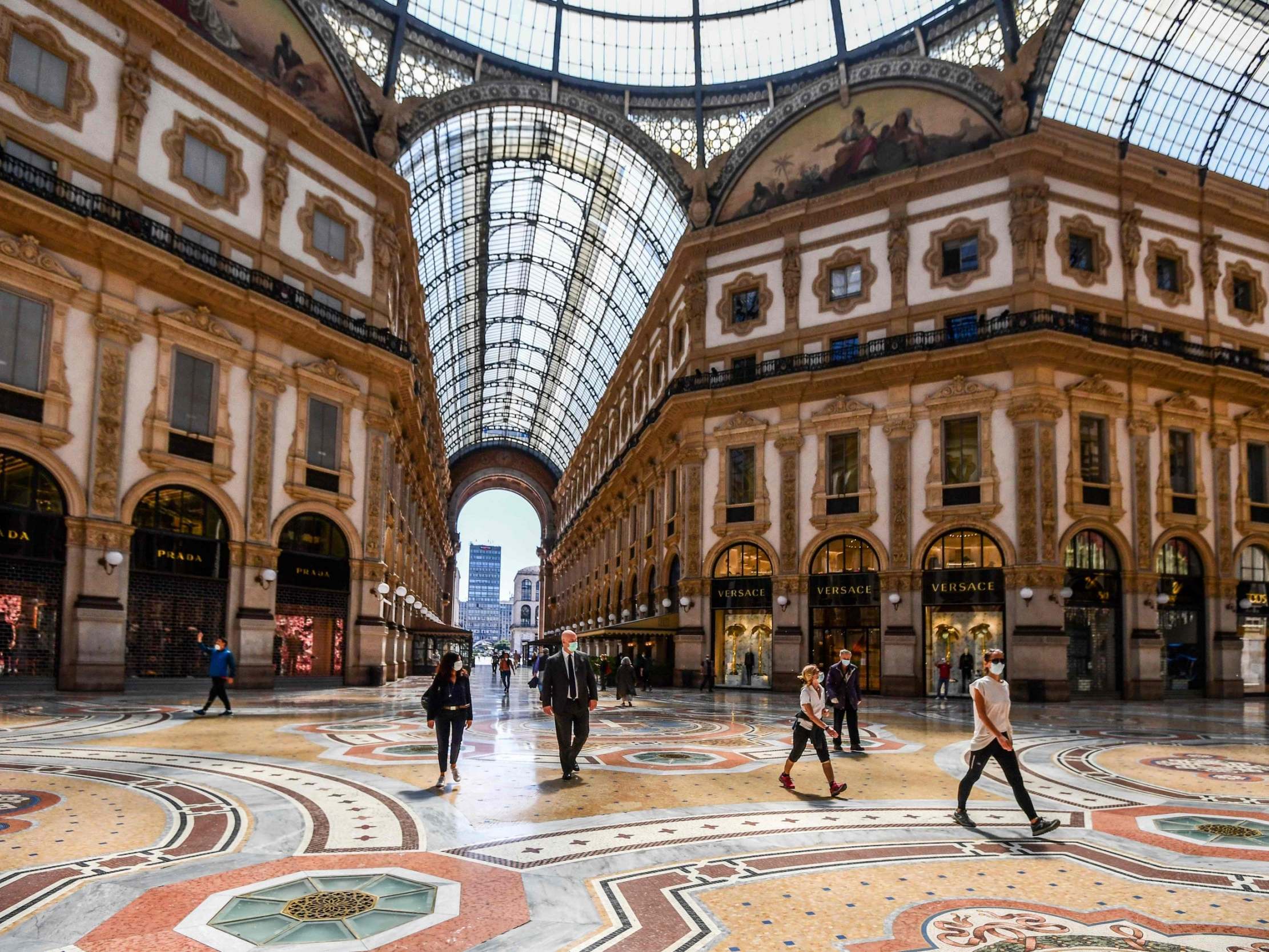
14/19
People walk across the Galleria Vittorio Emanuele II shopping mall in central Milan as Italy eases its lockdown
AFP/Getty
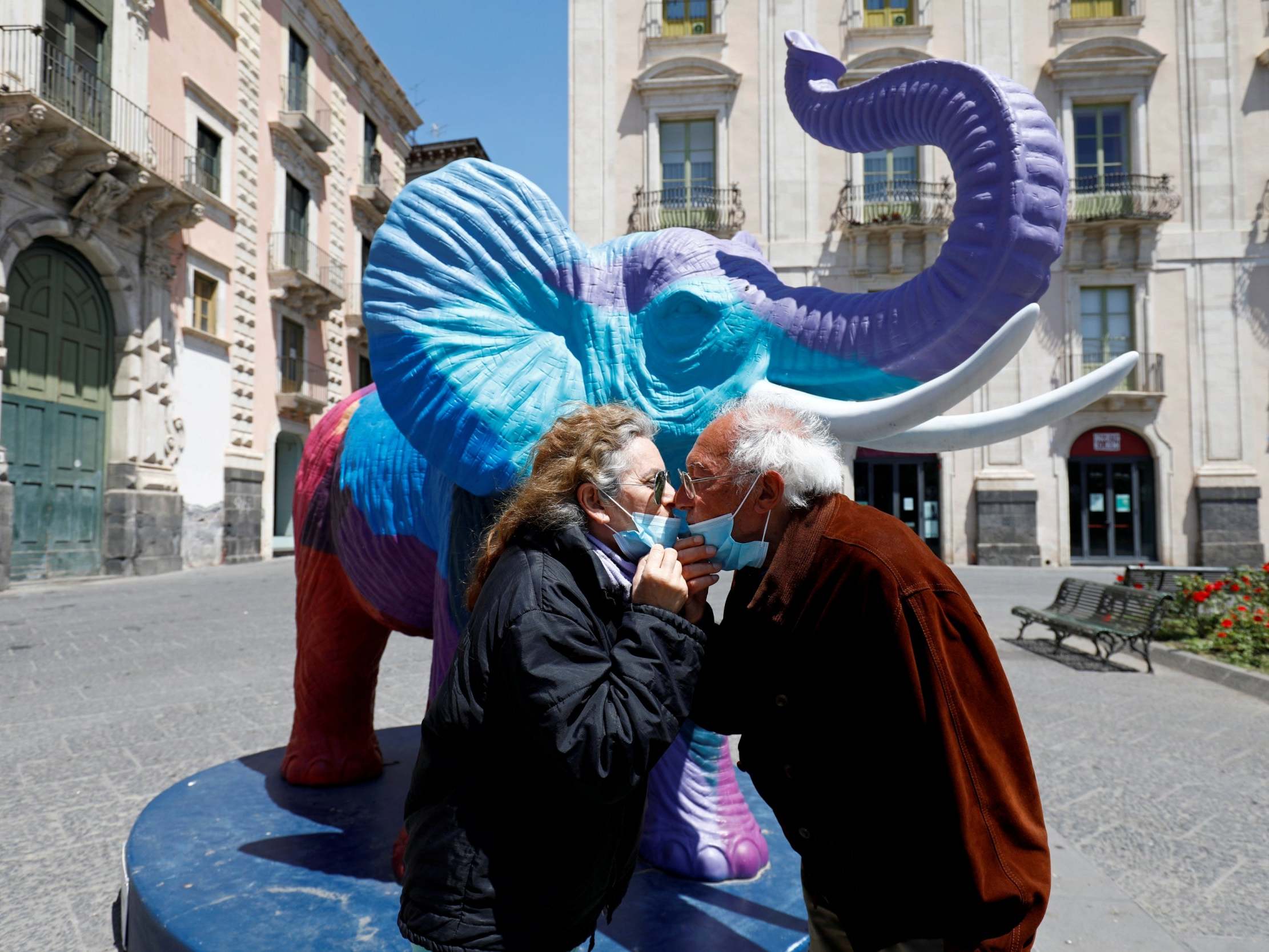
15/19
A couple kiss in the Duomo Square in Catania as Italy starts moving out of its lockdown
Reuters
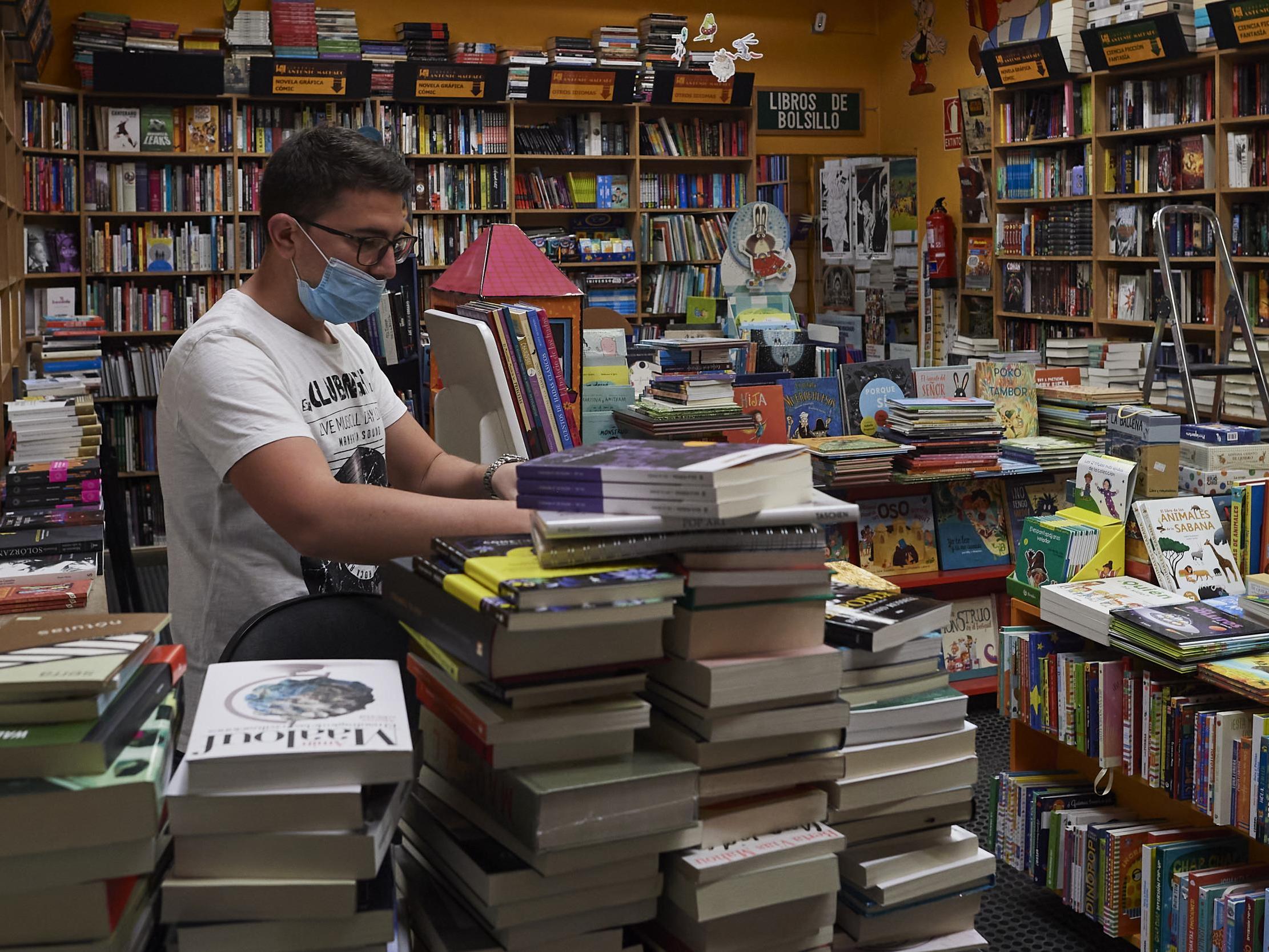
16/19
Mirel Chetan organises the books of the Antonio Machado bookstore in Madrid after 51 days of closure
Carlos Alvarez/Getty Images
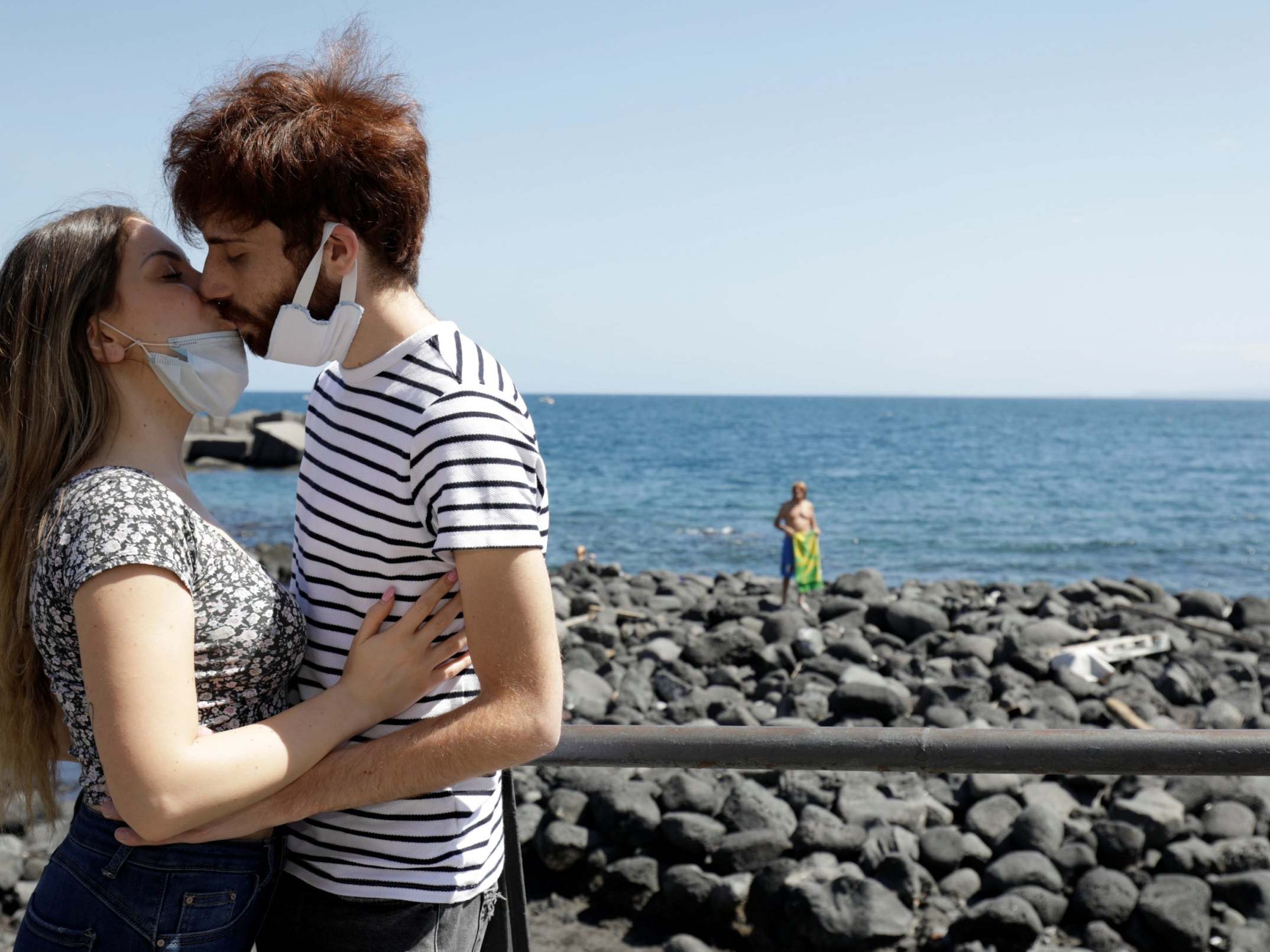
17/19
A couple kiss in front of the sea in Catania as Italy begins a staged end to a nationwide lockdown due to the spread of the coronavirus disease
ANTONIO PARRINELLO/ REUTERS
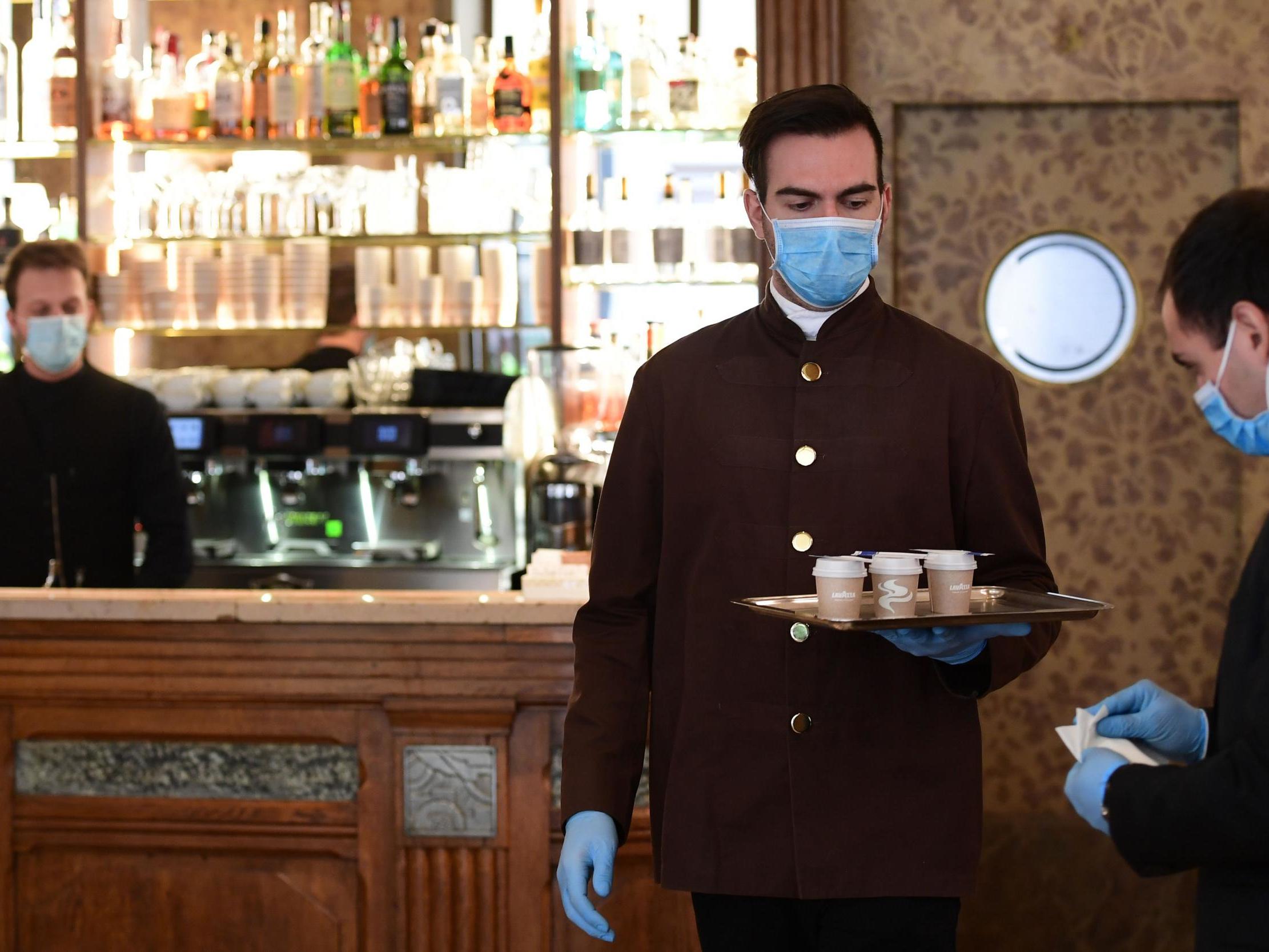
18/19
A waiter at Caffe Cracco handles takeaway coffee in Milan on 4 May as Italy starts to ease its lockdown
Miguel Medina/AFP via Getty Images
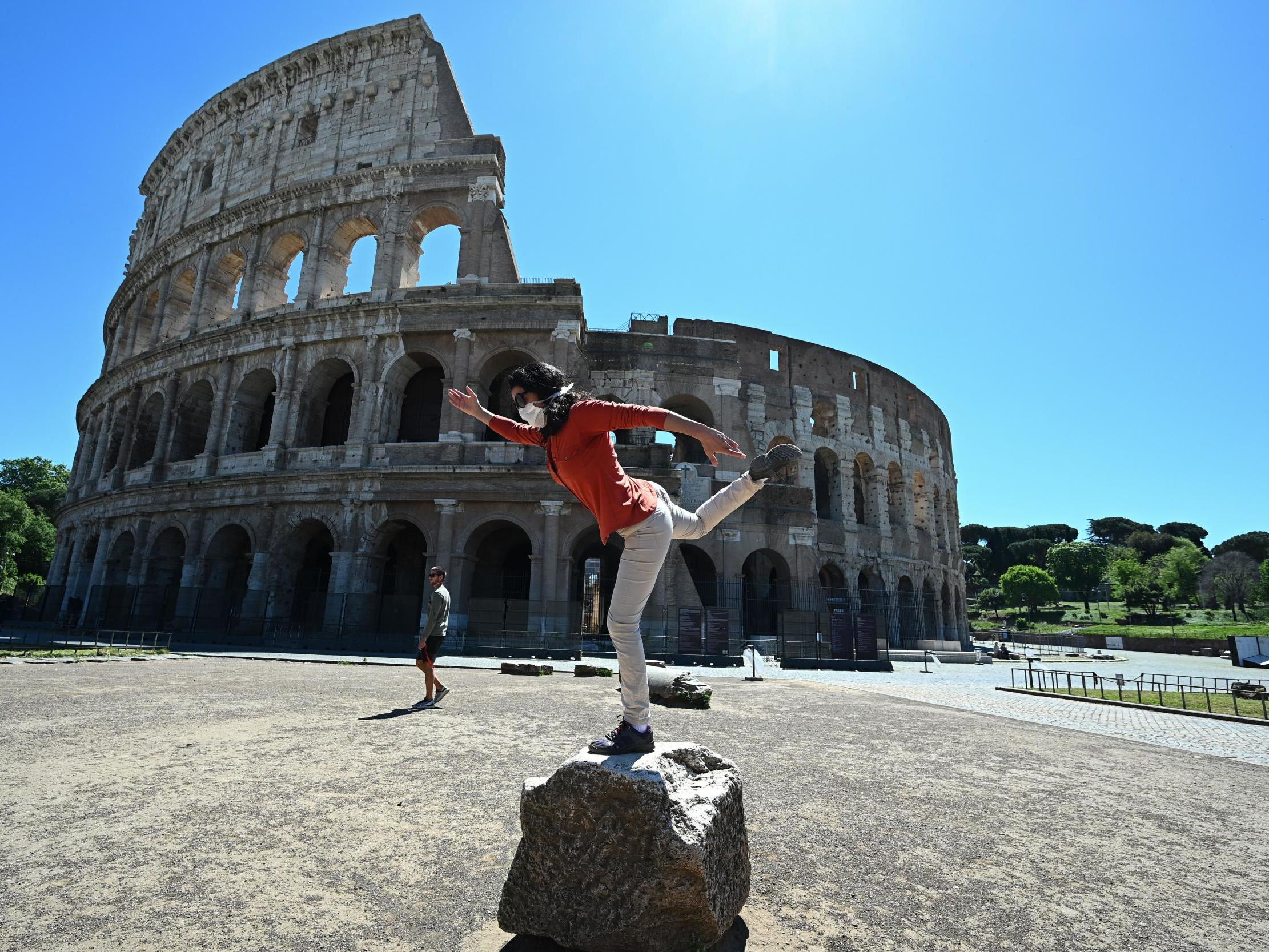
19/19
A woman holds a yoga posture as she exercises by the Colosseum monument in Rome on the first day of Italy relaxing its lockdown measures
VINCENZO PINTO/AFP via Getty Images

1/19
Two elderly people chat on a street in Valencia, Spain on 4 May
EPA

2/19
People look at the city from Villa Borghese park in Rome during the first day of Italy’s next phase in its coronavirus lockdown
Getty Images

3/19
An elderly couple who has not been outside for nearly two months enjoys the weather as they sit on a bench in a park in Athens on 4 May
AFP via Getty Images

4/19
Henri de Chassey, wearing a protective face mask, kisses his partner Margaux Rebois, who is returning to Paris after spending two months in Brussels on 4 May
REUTERS

5/19
A commuter in protective mask wears gloves at an underground station in Brussels as some companies are allowed to bring workers back to the office
EPA/STEPHANIE LECOCQ

6/19
Paralympic swimmer Inigo Llopis prepares to swim in San Sebastian, Spain, for the first time since the lockdown began
Getty Images

7/19
A worker wearing personal protective equipment disinfects a school in Athens as Greece relaxes its nationwide lockdown
REUTERS

8/19
A Spanish National Police officer distributes protective masks in Melilla, Spain, on 4 May
EPA

9/19
An employee poses in front of halfway-cured hams in a factory in Guijuelo, Salamanca, Spain, on 4 May
EPA

10/19
Workers in protective suits disinfect a high school in Athens as Greece moves to reopen schools for final-year students on 11 May
EPA

11/19
A worker disinfects a bus as transport vehicles are disinfected several times a day as part of Belgium’s lockdown exit strategy
Belga/AFP via Getty Images

12/19
A worker from Textilia haberdashery in Brussels holds a fabric that can be used to make customised protective face masks as Belgium relaxes its lockdown measures
REUTERS/Yves Herman

13/19
A bride tries on a wedding dress at a bridal shop in Madrid on the first day that some small businesses are allowed to open during Spain’s lockdown
REUTERS

14/19
People walk across the Galleria Vittorio Emanuele II shopping mall in central Milan as Italy eases its lockdown
AFP/Getty

15/19
A couple kiss in the Duomo Square in Catania as Italy starts moving out of its lockdown
Reuters

16/19
Mirel Chetan organises the books of the Antonio Machado bookstore in Madrid after 51 days of closure
Carlos Alvarez/Getty Images

17/19
A couple kiss in front of the sea in Catania as Italy begins a staged end to a nationwide lockdown due to the spread of the coronavirus disease
ANTONIO PARRINELLO/ REUTERS

18/19
A waiter at Caffe Cracco handles takeaway coffee in Milan on 4 May as Italy starts to ease its lockdown
Miguel Medina/AFP via Getty Images

19/19
A woman holds a yoga posture as she exercises by the Colosseum monument in Rome on the first day of Italy relaxing its lockdown measures
VINCENZO PINTO/AFP via Getty Images
At one point, the secretary of state for health found himself explaining that, actually, our care home death rate compares favourably with some other countries. Not all other countries. Not like South Korea, for example, where there hasn’t been a single one. It was nevertheless an interesting comparison, given that last week, when the UK found it had the highest Covid-19 death toll in Europe, Boris Johnson began to describe country-to-country comparisons as “premature”.
Now the policy has been gently tweaked to mean that it is only “premature” to make unfavourable comparisons. The few remaining favourable ones to be found are fine, for now, so who can blame Hancock for getting in there while he can?
In recent weeks, it has been suggested that far from being accidentally leaked from a Chinese laboratory, coronavirus could have been secretly created by the Trump administration, as a last-ditch attempt to get Mexico to pay for the wall which has not yet been built, on the grounds it will now be desperate to keep Americans out.
That seems a little far fetched, not to say high risk. Far better to just do a Hancock and build the wall through the power of your imagination. Nobody has to pay for that, not your grandparents, not Mexico, not anybody. Well, not with cash anyway, just with life, and rarely, if ever before, has that particular stock been valued quite so cheaply.


